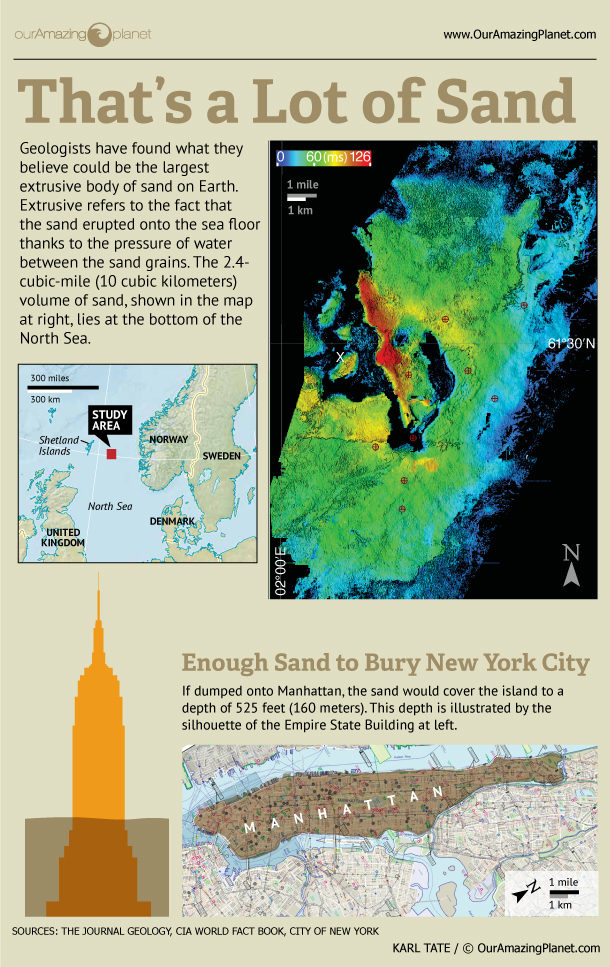
World's Largest Sand Mass Discovered Under Seafloor

A giant mass of sand large enough to bury all of Manhattan under dunes more than 50 stories tall apparently erupted from the floor of the North Sea hundreds of thousands of years ago, the largest such body of sand ever found in the world, researchers say.
Scientists used 3D seismic data and samples drilled from the ocean bottom during fossil fuel exploration to analyze a huge body of sand that lies over an oil field in the North Sea. Their research suggested it was "extrusive," spewed out from fissures in the seafloor likely over the course of years sometime between 400,000 and 2.6 million years ago.
At 2.4 cubic miles (10 cubic kilometers) in size, this is apparently the largest extrusive body of sand ever discovered. This is big enough to bury Manhattan's 23 square miles (60 square kilometers) under 525 feet (160 meters) of sand, or the whole of London's 610 square miles (1,579 sq km) under 20 feet (6 m) of sand.
"Most exciting is discovering things for the first time and realizing that you have discovered something new," researcher Helge Løseth, a geologist at the Statoil Research Center in Trondheim, Norway, told OurAmazingPlanet. [Gallery: One-of-a-Kind Places on Earth]
Currently, the sand covers an area of more than 100 square miles (260 sq km) and is up to 410 feet (125 m) thick. It lies buried under about 2,300 feet (700 m) of sediment that accumulated on top of it after its deposition, with at least another 1,640 feet (500 m) of the North Sea above that.
Løseth explained that under the surface of the seafloor, porous sands are covered with impermeable clays. The water pressure between the sand grains can increase enough to fracture the overlying clays, and this pressurized sandy water will then erupt upward.
"This is similar to when you increase the water pressure in one end of your garden hose by turning the tap," Løseth said.
Sign up for the Live Science daily newsletter now
Get the world’s most fascinating discoveries delivered straight to your inbox.
Aside from being interesting for its size, this body of sand might have economic value as well. The pores between sand grains are normally filled with water, but hydrocarbons such as oil or gas can migrate into these pores instead.
"Such big sands are so large that they can contain economically interesting volumes of hydrocarbons," Løseth said. "Today, at the depth they are placed in the North Sea, they may also be interesting for carbon dioxide storage."
Løseth and his colleagues Nuno Rodrigues and Peter Cobbold detailed their findings online March 19 in the journal Geology.










